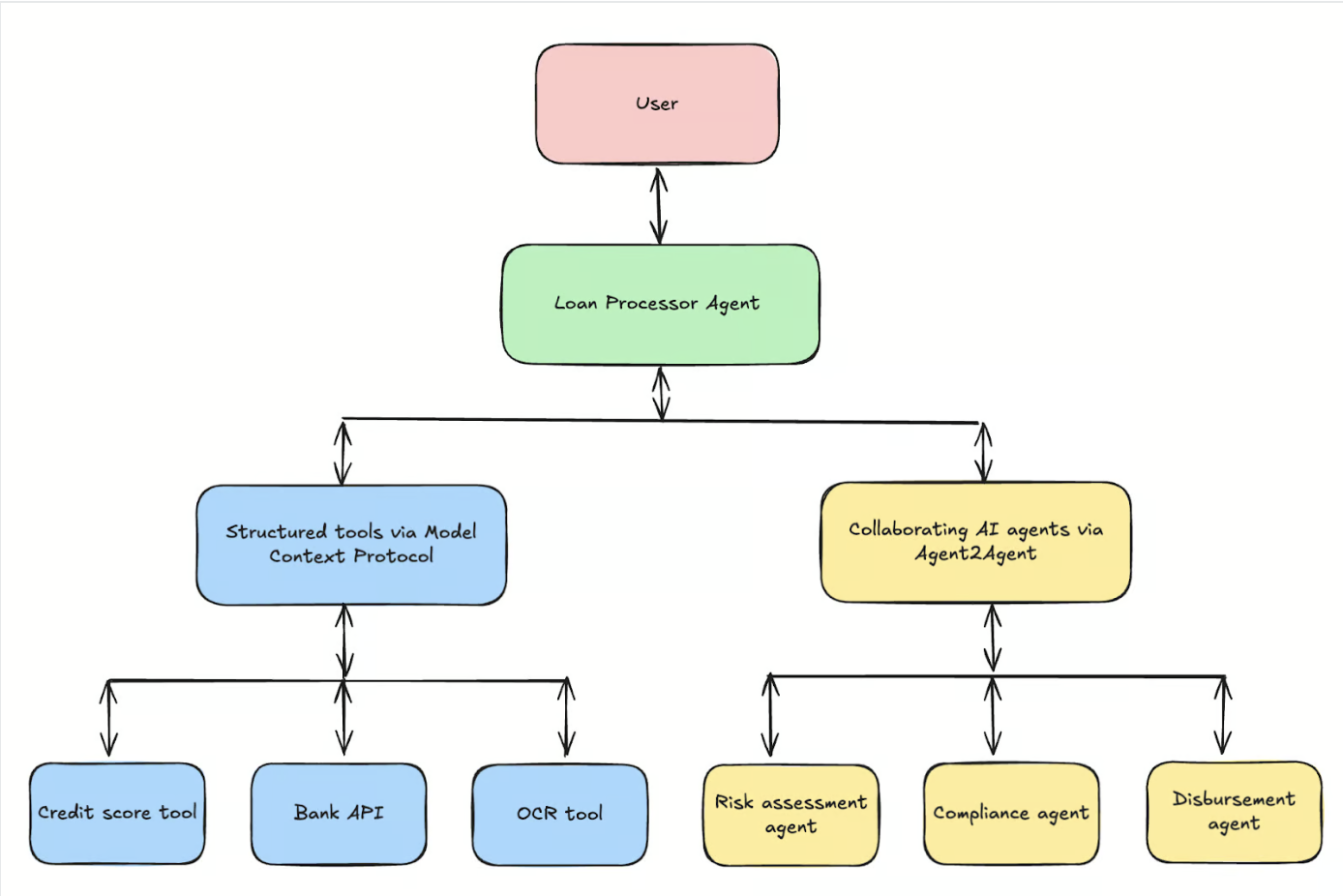Read the full article on DataCamp: Agent2Agent Protocol (A2A) – A Guide With Examples
Learn about Google’s Agent2Agent (A2A), an open protocol that enables multi-agent collaboration via structured tasks, messaging, and streaming – powering scalable, cross-platform AI agent ecosystems.
Contents
- What Is Agent2Agent (A2A)?
- How Does A2A Work?
- A2A Example: IT Helpdesk Ticket Resolution
- A2A vs MCP: When to Use What?
- Conclusion
What Is Agent2Agent (A2A)?
Agent2Agent (A2A) is an open, vendor-neutral protocol developed by Google that standardizes collaboration among AI agents. It allows agents to:
- Discover each other
- Exchange structured tasks
- Handle streaming responses and multi-turn conversations
- Interoperate across text, image, video, and structured data
🔍 Think of A2A as HTTP for agents — enabling structured, stateless, cross-platform interactions.
A2A Design Principles
- Agentic autonomy — no memory/tool sharing required.
- Built on open standards — HTTP, JSON-RPC, SSE.
- Secure by default — OpenAPI auth support.
- Supports long-running tasks — async + streaming ready.
- Modality agnostic — handles PDFs, JSON, HTML, images, and more.
How Does A2A Work?
A2A defines a lifecycle and architecture that enables agents to communicate as black boxes.
🎭 Actors in A2A
- User — The end user initiating the task
- Client Agent — Sends the task
- Remote Agent — Executes the task
🧭 Agent Discovery
Agents expose an .well-known/agent.json file called an Agent Card, containing:
- Name, description, URL
- Authentication methods
- Supported input/output formats
- Skills and usage examples
🧱 Core A2A Concepts
| Object | Description |
|---|---|
| Task | Atomic unit of work |
| Message | Conversational exchange with optional inputs |
| Artifact | Immutable result (e.g., report, JSON file) |
| Part | Building block of message/artifact (text, blob, etc.) |
A2A Workflow Example
Let’s consider a task: “Schedule a laptop replacement.”
- User submits the request to a Client Agent.
- Client Agent discovers a Remote Agent using the
.well-known/agent.jsoncard. - Client sends a
task/sendrequest over HTTP+JSON-RPC. - Remote Agent responds:
- Completes task (
artifact) - Streams partial updates
- Requests additional input (
input-required)
- Completes task (
- Task state transitions: submitted → working → input-required → completed
🧪 Communication Flow
Client Agent → task/send → Remote Agent
Remote Agent → task/update/task/artifact → Client Agent
A2A is stateful via Task objects and async-ready using Server-Sent Events (SSE) or webhooks.
A2A Example: IT Helpdesk Ticket Resolution
Imagine a user types:
“My laptop isn’t turning on after the last software update.”
Here’s how agents resolve it using A2A:
- Client Agent initiates task
- Hardware Diagnostic Agent runs checks
- Software Rollback Agent investigates updates
- Device Replacement Agent schedules delivery
✅ Each agent:
- Publishes an Agent Card
- Handles its own logic independently
- Uses artifacts and messages to report results
A2A vs MCP: When to Use What?
A2A and MCP serve complementary roles in agent-based systems.
| Feature | A2A | MCP |
|---|---|---|
| Purpose | Agent-to-agent collaboration | Agent-to-tool interaction |
| Based on | JSON-RPC, SSE | JSON Schema + function calling |
| Handles | Messages, artifacts | APIs, tools, functions |
| Example | Agents resolving helpdesk ticket | LLM calling OCR, API, DB query |
A2A is for agent coordination.
MCP is for agent tool usage.
Conclusion
Agent2Agent (A2A) is the missing glue in modern agent systems. It brings:
- Modular and stateless coordination
- Inter-agent messaging and artifact passing
- Discovery via
.well-knowncards - Vendor-agnostic, secure, and async-ready foundation
Whether you’re building with Google ADK, CrewAI, or LangGraph, A2A helps agents talk to each other — in a structured, scalable, and resilient way.


Comments